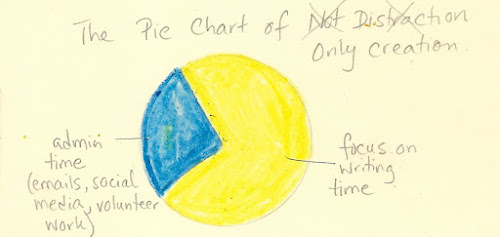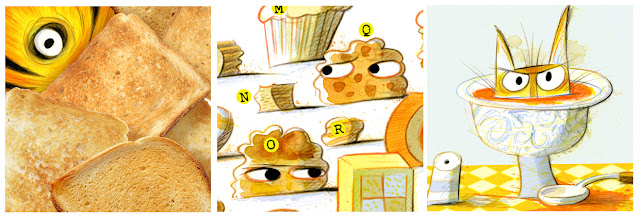I have a
dream – to write more and earn enough to write more and so on. So, I’ve been
reflecting on how other writers manage to do this.
The trick, it seems, is not just bum on seat time writing, but either enough publishing contracts to create an income stream, alongside potential earnings from backlist titles, or even a bestseller to earn big bucks. Maybe it’s something in-between?
The main question remains: how to get the books (or content) you write and create to actually sell to a publisher in the first place? Obstacles:
- Frequently, you have to write many books – or creatively re-visualize the ones you’ve written so they actually sell – before a publisher says ‘yes’ and you have come money coming in.
- Some books, especially non-fiction or longer novels, take a long time to write. Meanwhile, you’re not earning money.
- Submissions take so much time to get a response! In the meantime, again, you’re not earning any money . . .
Most business people have a PLAN. As entrepreneurs, we are writers, creators of content, editors, marketeers, accountants, PR experts and more. Possibly, a business plan might look something like this:
1. MAKE WRITING A HABIT
2. CREATE A BODY OF WORK
3. DIVERSIFY YOUR INCOME STREAM
4. SELL MORE BOOKS/CONTENT
Repeat!
Part 1: MAKE WRITING A HABIT
Show up for work!
OK, so once you decide to try to make a go of writing to earn a living, how do you survive in the interim? Don’t give up the day job yet (in my case, editing), because you need to pay bills. But maybe try to consistently dedicate a few hours a week to writing. Gradually try to shift the balance between different kinds of paid work?
Part 2: CREATE A BODY OF WORK
Make
products that could generate income.
I can do this. I can definitely visualize lots of books I’d like to write, that I’m excited to create. Great!
Except for the fact that just creating books doesn’t earn enough money to live off – yet. So, while waiting for those to hook in an editor . . .
Here are some things other authors are doing to try to generate a more steady income:
• Work on LOTS books at once (some authors work on up to 10 picture book or non-fiction projects at once). This might help increase the probability of the right book finding the right editor at the right time, but the chicken and egg conundrum around this that I wrestle with is:
How to spend time on so many projects when you need a day job to live? There are not enough hours in the day . . .
• Write
for different types of publishing markets – e.g. work for hire, magazines,
educational materials. Arguably, this doesn’t pay as well as if you sell your
book on an advance and royalty deal, and sometimes these jobs can be hard to
come by. Bt maybe if you are able to land some, enough of these jobs could be good ‘bread and butter’ money to start
to shift the balance?
No one said it would be easy!
Part 3. DIVERSIFY YOUR INCOME STREAM
Get
creative with your content and talent to generate additional income
• For many working authors and illustrators, fees earned at events like festivals, school and library event appearances are a great way to supplement their income. Plus it’s super-important to be visible, connect with readers and promote & market your book and it can be a good earner if you’re willing to put in the time and travel.
• I can also offer workshops to schools and to other writers/creative for a fee.
The key to this is figuring out what unique skills you have and how you might be able to market them to schools, libraries, writers, etc. Then, if you can get enough gigs, you could start to supplement your day job (and, if relevant, any current book sales) income in other ways such as teaching, workshops, and appearances.
Part 4: SELL MORE BOOKS
Promote sell promote sell promote sell . . .
Once you do have a body of work, you need to sell more copies – and keep them selling over a longer period of time! HOW?
- Keep meeting people who you can tell about your book
I’ve been doing this by making it my goal to reach out to people who might be interested in my book every week or so and offering to connect with free content. Who?
- Bloggers and Podcasters (and other influencers)
- Booksellers
- Teachers and librarians
- Reviewers
- Fellow authors and illustrators
Recently, I’ve been doing some virtual
visits for free to promote THE CRAYON MAN with the aim of selling copies of the
book to attendees.
You can create free content such as videos, activities, educators' guides and similar to support this endeavor.
But this again takes time – less time to write and create new content . . .
So, how to advance beyond this circular conundrum?
I don’t
have the answer, but I am persevering.
To shift the pie-chart quarters, I am trying to:
1. Be
goal-centred, productive and focused in order to get more writing accomplished in
a small amount of time
2. Schedule what I will do when. When we don’t have to pfaff around figuring
out what to do and can ‘hit the desk running’ knowing what tasks need to be
done when, we can be more efficient and waste less time. This is part of the
PLAN.
** Block out creative time, day job time, family time and admin time (where I
answer emails, do social media and volunteer work in blocks of time which is
more efficient than being interrupted all the time).
And if I
don’t manage it?
Here’s
the thing I’m trying out: Be kind to yourself! There are many days when I don’t
succeed in doing what I set out to achieve.
 That’s
OK. I can adjust. And keep writing.
That’s
OK. I can adjust. And keep writing.
_______________________________________________________________________













































